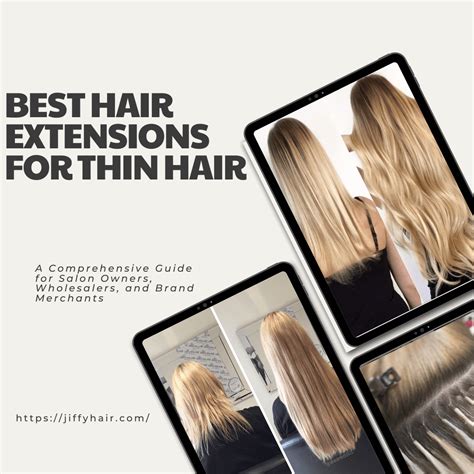Introduction

The global hair extension industry is experiencing a surge in demand, driven by the increasing popularity of hair transformations and the desire for fuller, more voluminous locks. Wholesale hair vendors play a pivotal role in supplying hair salons, beauty professionals, and consumers with high-quality hair extensions. Navigating the wholesale hair vendor market can be daunting, but this comprehensive guide provides invaluable insights to help you make informed decisions.
Types of Wholesale Hair Vendors
Wholesale hair vendors can be classified into two main types:
- Raw Hair Vendors: Source raw, unprocessed hair directly from donors, offering the purest and most customizable form.
- Processed Hair Vendors: Obtain hair that has been processed to achieve various textures, colors, and styles.
Factors to Consider When Choosing a Wholesale Hair Vendor
- Quality: Evaluate the hair’s texture, luster, and durability.
- Origin: Choose vendors who source hair from reputable countries known for producing high-quality hair.
- Ethical Sourcing: Ensure that hair is ethically harvested and that donors are fairly compensated.
- Pricing: Compare prices from multiple vendors to find the best value.
- Customer Service: Look for vendors with responsive support and a proven track record of customer satisfaction.
How to Find Wholesale Hair Vendors
- Online Marketplaces: Alibaba, Aliexpress, and DHgate are popular platforms for finding wholesale hair vendors.
- Trade Shows: Attend hair industry trade shows to connect with vendors and view their products firsthand.
- Referrals: Ask fellow hairdressers or salon owners for recommendations.
- Social Media: Follow hair vendors on Instagram, Facebook, and YouTube to stay informed about their offerings.
Negotiating with Wholesale Hair Vendors
- Establish a Budget: Determine your budget and stick to it during negotiations.
- Request Samples: Ask vendors for samples to assess the hair quality before placing a large order.
- Discuss Discounts: Negotiate discounts based on order quantity and long-term partnerships.
- Clarify Payment Terms: Understand payment methods, shipping costs, and return policies before agreeing to a purchase.
Tips and Tricks
- Build Relationships: Establish strong relationships with vendors to access exclusive deals and preferential treatment.
- Order in Bulk: Purchasing hair in bulk can reduce shipping costs and secure better prices.
- Compare Prices: Research and compare prices from multiple vendors to ensure you’re getting the best value.
- Use Keywords: When searching for vendors, use specific keywords such as “Brazilian Remy hair” or “Virgin Indian hair” to narrow down your results.
Common Mistakes to Avoid
- Relying on Images: Do not solely rely on product images; request hair samples to physically assess the quality.
- Ignoring Ethical Concerns: Ensure that hair is ethically sourced to avoid supporting questionable practices.
- Overbuying: Avoid purchasing excessive inventory that may become outdated or damaged.
- Neglecting Customer Service: Choose vendors with responsive and reliable customer support to resolve any issues promptly.
Step-by-Step Approach to Finding Wholesale Hair Vendors
- Define Your Needs: Determine the types of hair extensions you require and their specifications.
- Research and Identify Vendors: Explore online marketplaces, trade shows, and industry resources to identify potential vendors.
- Request Samples: Contact vendors to request hair samples for quality assessment.
- Negotiate and Order: Negotiate pricing, discounts, and payment terms before placing an order.
- Receive and Inspect: Inspect the hair upon receipt to ensure it meets your expectations.
- Build Relationships: Foster long-term relationships with reliable vendors to secure exclusive deals and ongoing support.
Market Analysis
The global hair extension market is projected to reach $12.2 billion by 2027, exhibiting a CAGR of 7.4%. Rising demand for hair transformations, advancements in hair technology, and the growing popularity of social media have contributed to this growth.
Table 1: Top Hair Extension Importing Countries
| Country | Market Size (USD Billion) |
|---|---|
| United States | 3.5 |
| United Kingdom | 0.8 |
| France | 0.6 |
| Germany | 0.5 |
| Canada | 0.4 |
Table 2: Key Hair Extension Trends
| Trend | Description |
|---|---|
| Remy Hair | Hair cuticles aligned in the same direction, resulting in smooth, tangle-free extensions. |
| Double Drawn Hair | Hair that has been drawn twice to remove short or damaged strands, creating a fuller and more voluminous look. |
| Tape-In Hair Extensions | Pre-bonded extensions that are applied with adhesive tape, offering a discreet and comfortable option. |
| I-Tip Hair Extensions | Extensions that are attached using tiny beads, providing a seamless and customizable look. |
Table 3: Hair Extension Pricing Guide
| Hair Type | Price Range (USD per Bundle) |
|---|---|
| Raw Indian Hair | $100-$250 |
| Remy Brazilian Hair | $200-$400 |
| Virgin Peruvian Hair | $300-$500 |
| Tape-In Hair Extensions | $150-$300 |
| I-Tip Hair Extensions | $100-$200 |
Conclusion
Navigating the wholesale hair vendor market requires careful research, negotiation skills, and a keen eye for quality. By following the insights provided in this guide, you can source high-quality hair extensions from reputable vendors, build lasting relationships, and meet the growing demand for hair transformations.
